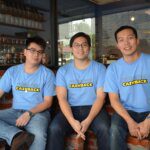Developing an app is hard. Attracting users i.e. marketing your app is even harder. Specially, if you developed your app before you thought about your end user – like most developers tend to do.
That’s why your app idea will probably, literally, be one in a million. There are approximately 6 million android apps and more than 5 million iOS apps, so chances are high, what you’re trying to create has already been done.
99% of these apps are downloaded less than a thousand times, and launched with just one version. In other words, your app is likely to fall into a massive pile of forgotten apps with no chances of it ever establishing its own uniqueness. Unless!
Unless, you realize one simple fact: the end-user is KING! Your app can only be a success if you mold your app to every whimsy of your King. This is the Lean Startup Methodology.
Developing Successful Apps through the Lean Startup Approach
Apart from the obvious advantage of creating an app that you know your users are going to love, creating apps through the lean approach also reduces costs and the app development period. It’s an approach that reduces uncertainty i.e. risk and focuses on optimization i.e. performance.
What Does It Mean to Be Lean?
Simply put, the lean approach forces you to validate your app. It challenges your assumptions about your target market, about the problem your app is supposed to solve for the users, about the need of the app etc – any assumptions you may have before developing the app.
Through the lean approach you can not only validate the app idea, but everything about the app as well, such as the app design, the app features, the monetization strategies etc. Everything that can affect the user’s experience of the app!
How to Apply the Lean Approach to Developing Successful Apps?
How exactly can you use the lean approach to develop successful apps and incorporate user feedback into every stage of the development? Here are a few ways you can follow the lean startup methodology while developing apps:
- Beta Users or App testers – First things first, you need to gather a group of people that may be interested in using the app you’re creating. A focus group, of sorts. These can be people who’ve signed up for your previous services, your newsletter, or simply the people who follow you on social media.If you don’t have any followers or subscribers you can join your app’s niche forums, get in touch with people who would be willing to be a part of your Beta Users’ group. These are the users you will be asking for feedback throughout the development cycle. You can also hire companies like Mobtest to thoroughly test your apps.
- Develop Mockups – Use Adobe Photoshop, Balsamiq or any other prototyping tool to create wire-frames and initial designs for your app. Once done, release them to your Beta Users or app testers and gather their feedback. Make the changes according to the most popular suggestions/critics you receive.
- Create a Minimum Viable Product (MVP) – create a non-native app (HTML5), because it’s easier to build yet yields reasonable results, with a few of the core functions and put it in front of your focus group. Consider this MVP as the initial draft for your app that you will be testing by distributing it to your Beta Users.
- A/B Testing – After distributing the MVP to your Beta Testers, run A/B testing using tools such as Taplytics and Make the changes according to the feedback and A/B testing results. Rinse and repeat this step until you have an app that satisfies your users and meets their needs.
- Develop the Final App for one Platform – Once you have the blue print of what will make your app a success, start developing it. Don’t focus on launching an app across multiple platforms. Stick to one platform, build natively and once you’ve ironed out all the wrinkles from the app i.e. bugs, crashes, errors etc – then build for other platforms.
Conclusion
Build, Measure, Learn and Feedback are the 4 tenants of the lean startup approach. Developing apps that have been thoroughly validated before a small percentage of your potential users ensure your app will be a success once it launched into the world.
This article was written by Nasrullah Patel, the co-founder of Peerbits. The company specialized in app development for various industry verticals. Nasrullah likes to be busy with his team and to provide top-notch mobility solutions to enterprises and startups. Follow Peerbits on Facebook.





























